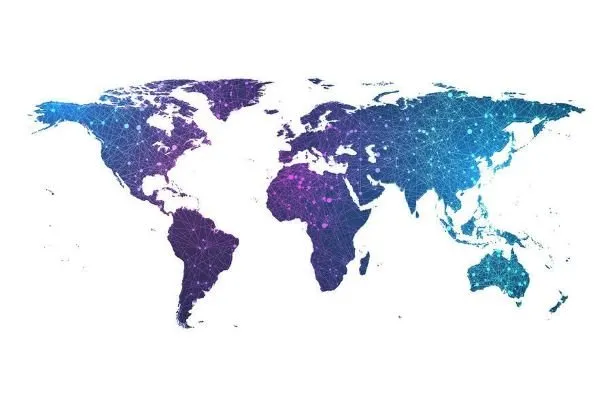Video games have become an important part of life for many people around the world for the past few decades. Today, they are a crucial and nearly unalienable part of popular culture in many countries of the globe. However, Chinese and Spanish gamers will see the same game differently. That happens mainly due to the video game localization process that is common nowadays, and which in turn occurs due to cultural differences and barriers. So, what is video game localization and how does it affect developers and players around the world?
What is Video Game Localization?
Localization on its own is not limited to video games and can be applied to any sort of content, be it a website, advertisement, or even an animated film for children. Being one of the most demanded services in the translation industry, localization ensures the appropriateness of the content to the target region. More particularly, a certain element of the business offering or marketing campaign is made recognizable, relatable, and natural for the region and its audiences. Even if the company has something innovative or unfamiliar to offer, it will look natural within the region’s environment as it will be presented in a way familiar to the audiences. During the localization process, language specifics, such as slang, are considered, along with culture, history, traditions, regulations, consumer trends, and many other aspects.
Like with any other kind of localization, all content of the video game is adjusted to the target region during this process. Regardless of whether it’s a small application for a smartphone or a huge powerful video game, the localized content is not only translated into another language but might also be altered in a way to appeal to the target region’s audience or comply with its cultural norms. In some cases, certain graphic elements of the game have to be redesigned in case if the original design might be perceived inappropriate by the audiences. In other cases, the dialogue lines might be rewritten and re-recorded for the target region to eliminate, for example, sexual references that are not allowed by the country’s legislation or might affect the game’s age rating in the country. All such things are done by the developer companies in order not to lose a potential market.
Read also: Trusted Somali translation services, use only the best for your needs.
Process of Video Game Localization
As any video game is a rather complex unit consisting of different kinds of content, localization of the video game is also done in several stages. Not only the interface and dialogue subtitles are translated, but the lines are also overdubbed by different actors, certain characters might be reinvented or redesigned, and even some storylines can be altered. So, how long does the video game localization take? In general, it depends on the publisher’s or developer’s established framework, but there are usually four or five separate processes that put the video game localization together.
- Research. Prior to launching the game in a certain region the video game publisher or developer takes a closer look at the target region. Such aspects as language nuances, culture, regulations, consumer trends, etc. are studied in order to locate the differences in perception of the game between the developer’s country and the target country. While this process does not usually take much time, it is quite thorough as it affects localized game design.
- Translation. All content found within the game is translated into the target language. Subtitles and dialogue are retyped and rewritten, and some models and textures are redesigned to fit the text in the target language.
- Adaptation. The translated content is adapted for greater relatability and recognition among the audiences. Subtitles have their final revisions for the speech to sound natural, and the professional actors are cast, sometimes including celebrities. A peculiar part of this stage is redesign. Sometimes, certain graphic elements are partially altered or completely reshaped. For instance, the game containing dragons as monsters might not be appealing or even make any sense at all to Chinese and Japanese audiences as dragons are considered good spirits in those cultures.
- Testing. The game is tested by the target country’s focus group to make sure there are no linguistic, functional, or design flaws.
- Additional revisions. In case any issues were spotted either by the focus group or by the developer’s testers, all needed corrections are made before the final release. This stage is rather optional as, oftentimes, the prior research made by the video game publisher or developer is enough to make all needed alterations right away.
So, the whole process of video game localization doesn’t seem to be very long or overcomplicated, yet, still requires some effort and dedication. The help of professional video game localization service will be needed for such work.
Video Game Localization Examples
So, how would the practical result of all those processes look in real life? Just as games vary widely, the results of video game localizations take different forms too. While in certain regions, only dialogues may be altered in order to be considered more appropriate for the audience or region’s legislation or age rating system. In other cases, the local celebrities might be used to overdub certain characters’ lines if the original cast also contained a recognizable voice.
Some of the most vivid examples of video game localization can be seen in the partial or complete redesign of certain elements of the game. Virtual street signs might be remodeled to fit in the text in another language or certain humorous names may be correspondingly adapted to another language to sound humorous for the audience in the target region as well. Finally, certain elements that might affect ratings in different countries will be altered. As such, while the American rating system might allow visual depiction of violence in the game, including blood, for players aged 13 and older, European ratings are stricter and such games might be only allowed for players aged 17 or older.
Video game localization process, thus, largely affects game designers and oftentimes, even the whole developer team. While it does not require much extra effort overall, it might still create additional costs for the video game developer or publishing company during the production. At the same time, the process is generally positive as it creates a number of careers providing many specialists around the world with a unique job opportunity.
Video Game Localization Challenges
Like with any other complex process that deals with cultural-specific and requires the effort of many people, video game localization also has its considerable challenges. Most cases relate to the cultural differences as some elements of the game design might be perceived very individually in various cultures around the world. As it was pointed out earlier, dragons that might be presented as monsters for the European audiences, will not make much sense for the Chinese gamers. Similarly, certain monsters from the Chinese or Japanese cultures might not make sense for European or American players.
Graphic elements often have to be redesigned as well. A depiction of blood might affect the game’s age rating in certain countries. In others, showing certain parts of the human body might be perceived negatively from the cultural point of view. As such, in China, showing human bones is considered a bad sign, which might give some modern role-playing game designers a headache.
Yet, such challenging work is very rewarding. A huge number of people aim to get into game development and localization. What makes the industry especially attractive for the workforce is that the work of such specialists is highly rewarded, with an annual video game localization salaries sometimes reaching the levels of game developers. While the job is also demanding skill-wise, the top priority still remains the end-user and his or her experience.
In other cases, certain textual elements of the game can be very challenging to translate or adapt properly. There is a number of idiomatic phrases and constructions in each language that are nearly non-translatable into another language. Such phrases might refer to a specific cultural element, such as cuisine, tradition, or holiday. In such cases, the translators will have to look very thoroughly for a similar expression in the required language that would not only match the context but also sound familiar with general audiences. Finally, some countries have very strict policies regarding the use of profanity or sexualized content in video games, hence, localizing certain shooters with a dynamic plot, for instance, might be very challenging.
Useful information: When entering Korean market with your game, make sure you use qualified Korean translation services.
Professional Video Game Localization Jobs
As the process of localization in the video game industry is quite complex and requires a considerable degree of thoroughness, there is a number of opportunities for language and localization specialists. A number of developers and publisher companies often start their career and internship programs in different countries, particularly in localization. For those who are interested to become closer to the gaming world, localization jobs include, but are not limited to:
- Researchers
- Translators
- Cultural advisors
- Lawyers
- Voice actors
- Graphic designers
- EditorsSoftware testers
- Game designers.
This list may go on depending on the video game developer’s or publisher’s needs, however, every listed specialist has to have a certain level of language skill. But there is always room for progress and development in video game localization careers. In most cases, those languages include English and the language of the target audience’s country. It is also very important to hire a local specialist, who is aware of the country’s cultural and consumer trends and who will make the final result as relatable and natural as possible for the target audience to perceive.
Hire Professional Service Only
A process of video game creation and localization might seem fun and dynamic, yet, it also requires some considerable collective effort. In order for the game to be perceived positively by the audience in another country, it is important to make proper research. Video game developers have to not just translate the game, but make it relatable and naturally-looking for the target audience. That is why it often crucial to address a professional localization service, which will certainly consider all cultural-specific and transform them into the gaming marvel in another country, even if the developer country might not have had much success at home.



